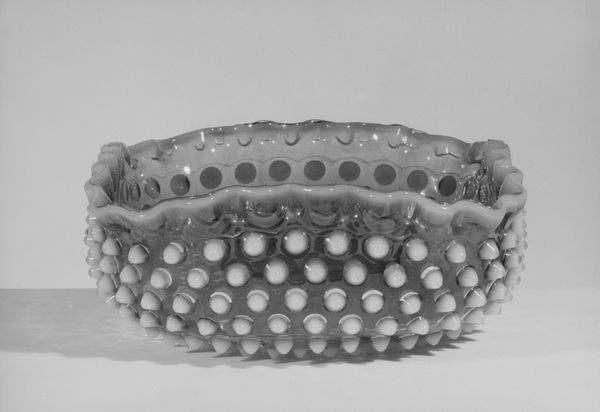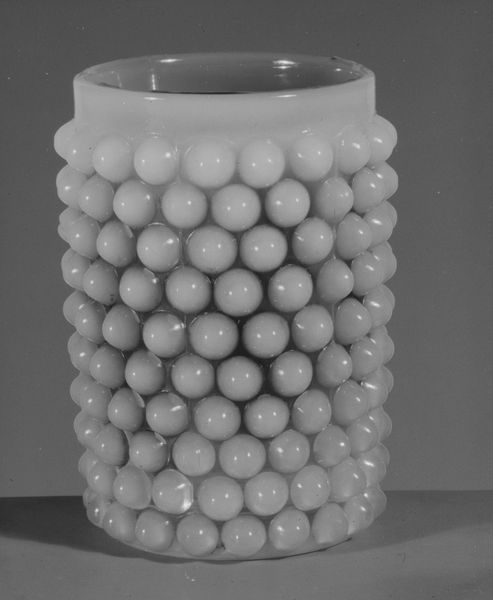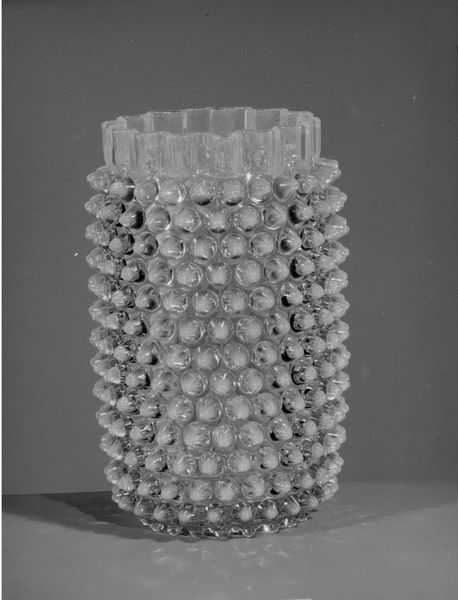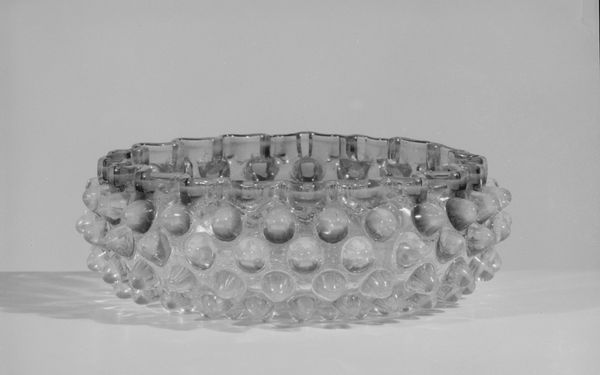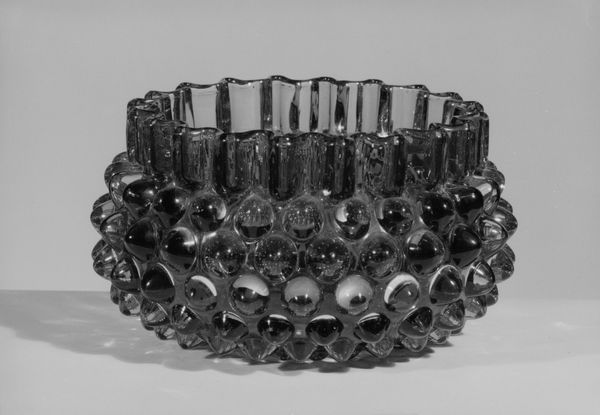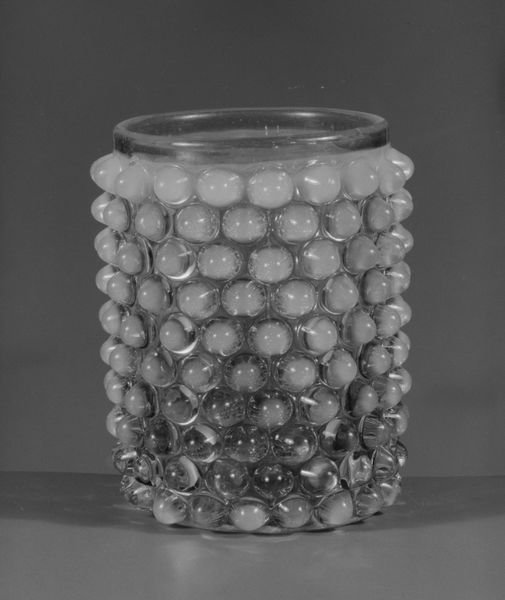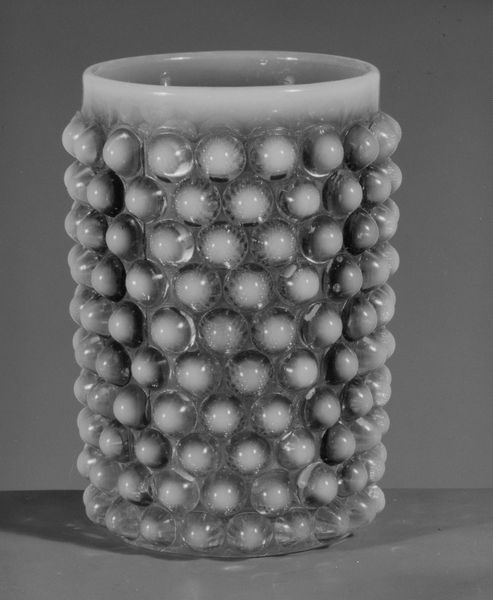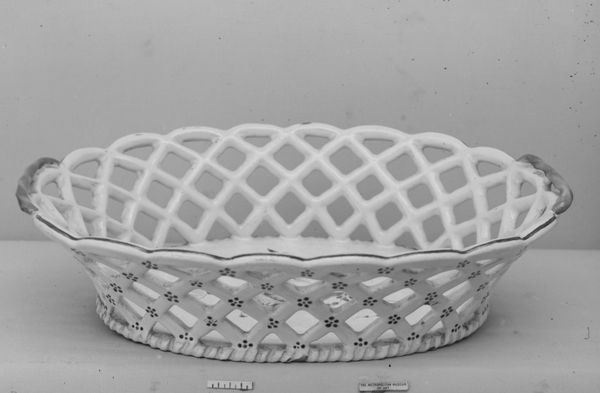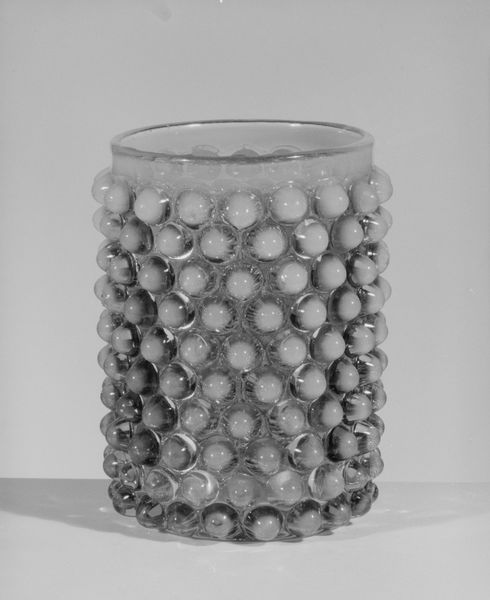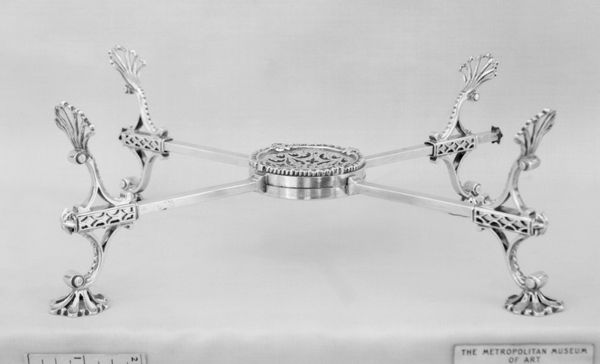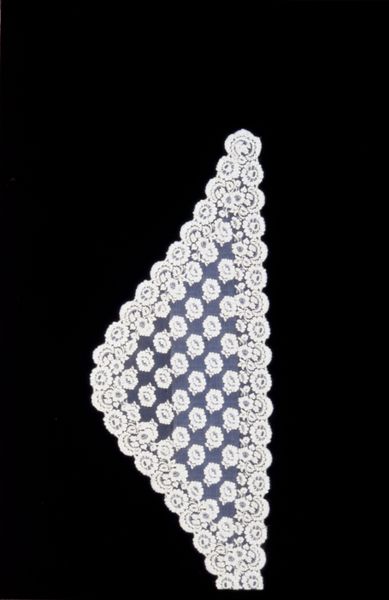
#
3d sculpting
#
3d printed part
#
jewelry design
#
sculptural image
#
appetizing
#
3d shape
#
stoneware
#
macro shot
#
united-states
#
macro photography
#
recipe
Dimensions: 1 3/4 x 4 3/4 in. (4.4 x 12.1 cm)
Copyright: Public Domain
Curator: What a fascinating object. This is a hobnail sauce dish, crafted by Hobbs, Brockunier and Company sometime between 1887 and 1896. Editor: It's rather whimsical, isn't it? All those little glass beads create such a tactile, almost playful quality. Curator: It's a product of its time. Think about the late 19th century, industrialization transforming domestic life. Suddenly, mass-produced, decorative items became accessible to a wider audience, a new way to express social status and consumer taste. This piece, residing at the Met, speaks to those rising aspirations. Editor: Do you see it as solely tied to upward mobility? I mean, the form is inherently feminine. A sauce dish itself suggests a domestic sphere largely inhabited by women. Does this ornamental, perhaps excessive, design serve to subtly reinforce gender roles? Curator: I find your question to be extremely compelling and spot on. This aesthetic choice mirrors, even solidifies, social structures related to wealth and the domestic placement of women. The home, idealized and ornamented, is presented as an ideal, attainable through consumption. We can link it to cultural expectations where feminine identity was associated with ornamentation and the maintenance of domestic spaces. Editor: There is almost a dialogue to be had between the interior volume meant for utility, and the ornamented exterior representing display and social performance. One wonders about the maker's social position and relationship to the decorative design. Curator: I agree. Thinking about the factory workers crafting these pieces—predominantly immigrants, working-class individuals often with limited access to the very world of wealth and leisure the objects represented. Consider their perspectives and experiences while interpreting this period. The production becomes another part of this complex relationship between social strata and material objects. Editor: This little dish holds a mirror to so much. Curator: Yes, the dish functions as both object and historical lens through which we can interpret power, gender, and labor in the Gilded Age.
Comments
No comments
Be the first to comment and join the conversation on the ultimate creative platform.
